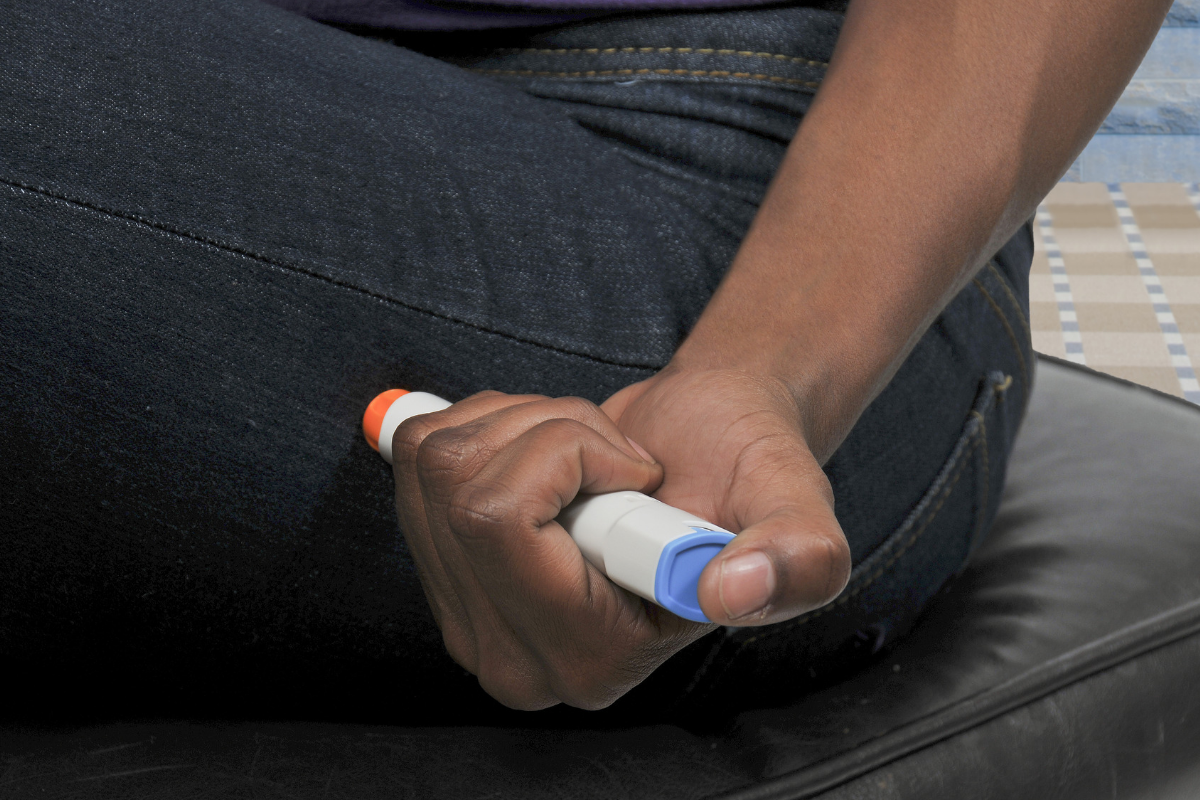On our first aid courses, we sometimes get questions about how to use an Epi-Pen and how they actually work.
So to answer these questions we’ve written a blog for those wanting more information. Read on for our quick guide for beginners!
What is an Epi-pen and how does it work?
Let’s start with the basics. An Epi-Pen is an instrument which provides an injection, used to treat the symptoms of anaphylactic shock.
What is anaphylactic shock?
Anaphylactic shock, or anyphylaxis, is often an extreme, life-threatening allergic reaction to an antigen to which the body has become hypersensitive. In rare cases, anaphylactic shock may not always be the result of allergens, for instance, an Auto-injector or Epi-Pen may also be needed to treat exercise-induced anaphylaxis.
The injection contains a chemical called epinephrine, which explains where the name ‘Epi-Pen’ comes from. The chemical works to narrow blood vessels and open airways in the lungs to reverse the symptoms experienced during anaphylaxis.

When might someone need an Epi-Pen?
The symptoms of anaphylaxis can come on very suddenly. Although they may be mild at first, they can accelerate rapidly so it’s important to be able to recognise the signs.
Some typical signs of anaphylactic shock can include:
- Pale, clammy skin
- Breathing difficulties: wheezing, shortness of breath, a tight feeling in throat
- Weak, rapid pulse
- Confusion and loss of consciousness
- Stomach pain, vomiting, or diarrhoea
- Dizziness and/or fainting
- Swelling of lips, tongue, or throat
- Skin rashes and itching
If any of these symptoms are identified, it is possible that the person is experiencing anaphylactic shock and needs the aid of an Epi-Pen.
How will I know if someone uses an Epi-Pen?
You can start by simply asking the person if they use an Epi-Pen. If they do, it may be that they need your help to use it, which is what we’ll come on to next.
It may not always be possible to get a coherent answer from a person experiencing anaphylaxis though, as it can cause a person to become confused or even lose consciousness.
If you suspect a case of anaphylaxis and the person is unresponsive, look for a medical indicator necklace, bracelet or a card in their wallet/purse. People who suffer from severe allergies usually carry these in case of an accident.
If you identify the need to use an Epi-Pen you should follow these next 4 steps.
How do you use an Epi-Pen?*

You can learn how to use an epi-pen or auto-injector on a first aid course. If you haven’t yet had any training, the best way to remember how to use an Epi-Pen is to memorise the saying, “blue to the sky and orange to the thigh”.
- PULL OFF BLUE CAP
Hold the Epi-Pen in your dominant hand in a fist with the blue cap pointing up. Pull the blue cap upwards and remove the safety cap.
- POSITION THE ORANGE TIP
At a distance of approximately 10cm, hold the Epi-Pen with the orange tip facing towards the outer thigh. (Note: you do not need to remove clothing for this as long as the orange end is not going to hit a buckle, button, or thick seam.)
- JAB THE ORANGE TIP
Jab the Epi-Pen into the outer thigh at a 90º angle and hold firmly for 10 seconds. The Epi-Pen should then be safely removed and discarded, the orange tip will extend to cover the needle. Massage the injection area for 10 seconds.
Helpful tip: At this stage, it will be more effective if you lay the person on their back with their legs raised to increase blood flow. If they are having difficulty breathing, it is best to keep them sat in an upright position.
- DIAL 999
Once completed, it is important that you call 999, ask for an ambulance and state “anaphylaxis”. The person must seek medical attention even if they are feeling better, as they may go back into anaphylaxis which will require further treatment.
*You should always read the manufacturers instructions before using different types of epi-pens auto-injectors, as these instructions may vary slightly.
What happens after using an Epi-Pen?
If the person’s symptoms don’t improve you can administer a new Auto-injector or Epi-Pen after 5-15 minutes whilst you wait for paramedics to arrive. Remember: Epi-Pens can only be used once and must be disposed of after use.
You should then prepare for any side effects after using the Epi-Pen. The person might experience a feeling of panic and/or paranoia, and their body could start to shake uncontrollably. Be calm and reassuring, this will help the shaking to subside.
Once the paramedics arrive, you have done your job. Well done… and if you want to be extra helpful, remind them to replace their used Epi-Pens!
Want to learn more about first aid?
You can learn more about what to do in situations such as this by taking one of our first aid courses.
Here at Train Together we offer a Level 3 First Aid at Work course which explores what to do in an incident of anaphylaxis, as well as a range of other subjects.
In addition to this, we offer a number of other First Aid and AED courses which might be of interest to you. If you’d like to know more, simply fill in the form below or call us to speak to one of our friendly first aid trainers.

